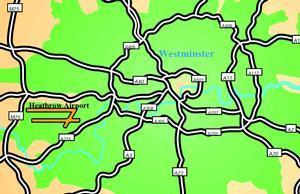It is the latter which potentially could have the most impact on construction in the capital. Under the heading of 'London's metabolism', the Plan says that 'London must use natural resources more efficiently, increase its reuse of resources and reduce levels of waste and environmental degradation.'
One of Livingston's major powers is over planning permission. It is clear from the London Plan that he intends to use this to drive greater sustainability. Use of renewables and greater energy efficiency will play a large part in the decisions made about planning applications. The Mayor's draft Energy strategy (due out in its final form very soon) is quoted in the London Plan, and sets out a hierarchy which should guide the consideration of proposals. This list suggests that essential energy needs should be met by applying the following in sequence: using less energy; using renewable energy; and supplying energy efficiently.
The Mayor will also be requesting that energy assessments are supplied for 'proposed major developments'. London boroughs are encouraged to demand the same information. The Plan sets out an 'order of preference' for heating and cooling techniques which should be demonstrated for success at the planning stage. This list is:
- passive design;
- solar water heating;
- combined heat and power, preferably fuelled by renewables;
- community heating;
- heat pumps;
- gas condensing boilers;
- gas central heating.
Creation of renewable energy in London will be supported. The Mayor will support at least one large wind power scheme in the capital, along with building-mounted turbines. Sites suitable for turbines will be identified, as well as non-building integrated photovoltaics. Boroughs will be asked to set aside land for renewable technologies such as anaerobic digesters and biomass plants. The Mayor, boroughs and the Environment Agency will produce supplementary guidance on assessment of renewable energy schemes. Buildings will need to be future-proofed – for example, where photovoltaics are not initially incorporated the building should be of the correct orientation and design to allow for their use later.
When the full Energy Strategy is launched, it will inform the first review of the London Plan. The energy strategy includes policies requesting London boroughs to set consistent targets for generation of renewable energy in their areas, and to install at least one zero carbon development. There will also be Energy Action Areas in each borough.
The London Plan reiterates the Mayor's support for tall buildings, 'where they create attractive landmarks, enhancing London's character... and where they are acceptable in terms of design and impact on their surroundings'. The Plan offers clear signals that the Mayor expects tall buildings to be sustainable as well. Large scale buildings should 'illustrate exemplary standards of sustainable construction and resource management, and potential for renewable energy generation and recycling'. The plan adds that they should 'be sensitive to their impact on the micro-climate in terms of wind, sun, reflection and overshadowing'.
The Plan tackles the wider issues of creating a sustainable capital city: 'good design is central to all the objectives of this plan'. Architects, engineers and others in the design process will need to consider the impact of their buildings on the surrounding populace: 'poor design results in inefficient and fragmented use of land and in buildings and spaces that make hostile and unattractive environments for citizens and communities.'
Source
Building Sustainable Design























No comments yet